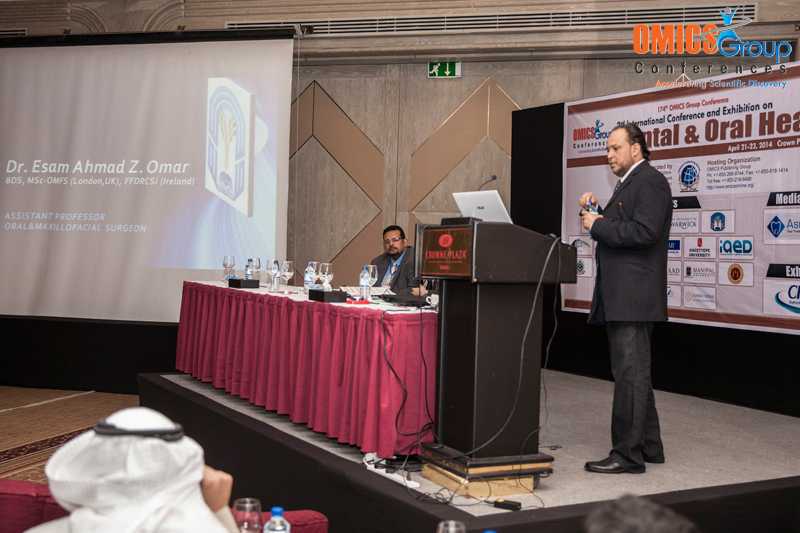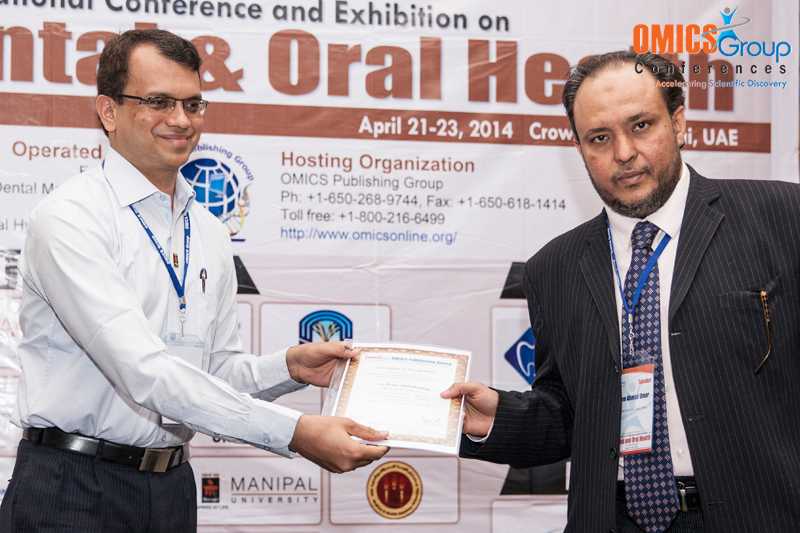
Esam Ahmad Omar
Taibah University
Saudi Arabia
Title: The outline of Prognosis & new advances in diagnosis of Oral Squamous Cell Carcinoma (OSCC)
Biography
Abstract
Objective : Oral squamous cell carcinoma (OSCC) has a remarkable incidence over the world and a fairly strenuous prognosis, encouraging further research on the prognostic factors and new techniques for diagnosis that might modify disease outcome. A web-based search for all types of articles published was initiated using Medline/Pub Med, with the key words such as oral cancer, prognostic factors of oral cancer, diagnostic method of oral cancer and imaging techniques for diagnosis of oral cancer. The search was restricted to articles published in English, with no publication date restriction (last update April, 2013). In this review article, I approach the factors of prognosis of OSCC and the new advances in diagnostic technologies as well. I also reviewed available studies of the Tissue fluorescence spectroscopy and other non-invasive diagnostic aids for OSCC. The outcome is greatly influenced by the stage of the disease (especially TNM) (noguchi, 2002). Prognosis also depends or varies with tumour primary site, nodal involvement, tumour thickness, and the status of the surgical margins. There is an urgent need to devise critical diagnostic tools for early detection of oral dysplasia and malignancy that are practical, non-invasive and can be easily performed in an out-patient set-up. Tumour diameter is not the most accurate when compared to tumour thickness or depth of invasion, which can be related directly to prognosis. Tissue fluorescence spectroscopy is a reliable optical diagnostic biopsy. The use of FDG-PET scanning in diagnosis of lymph node involvement is controversial and There is a wide agreement in using of ultrasound guided fine needle aspiration biopsies in evaluation of lymph node metastasis and it is considered as the most reliable technique.






